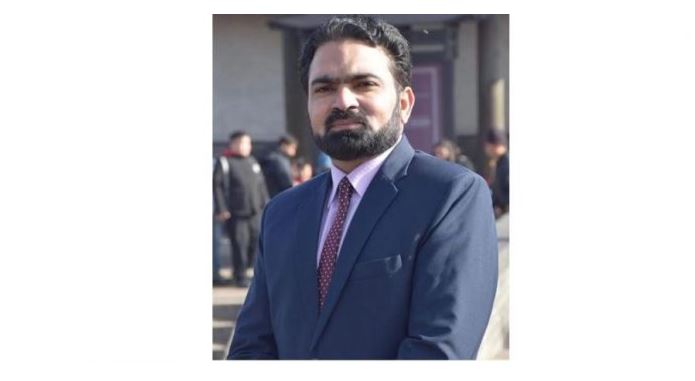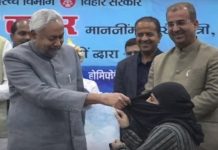Abdul Rashid Shakir
Availability of basic facilities like rewarding education, quality healthcare, affordable housing, reliable security and elimination of abject poverty through gainful employment are some of the fundamental socio-economic rights of people living in a modern welfare state.
During the course of its checkered history spanning over more than seven decades, the state of Pakistan has institutionalized many interventions for securing better scores on Human Development Index (HDI). Prime Minister Youth Programme (PMYP), Benazir Income Support Programme (BISP), Pakistan Baitul Mal (PBM), Punjab Education Endowment Fund (PEEF), Punjab Safe Cities Authority (PSCA) and Punjab Forensic Science Agency (PFSA) are some of the leading institutions in this regard.
Schemes like Youth Business Loan, Skill Development, Fee Reimbursement, Laptops and Internship were designed by the Federal Government to make our bulging young population a real national asset by catering to 3Es of development, that is Education, Employment and Engagement. Similarly, Scholarships under Punjab Educational Endowment Fund (PEEF), vocational training under Punjab Skill Development Fund (PSDF) and Danish Schools chain in Punjab are very valuable interventions of the Government of the Punjab for providing equal opportunities to the bright students of downtrodden segments of society to learn and thrive in their chosen fields.
It is worth-mentioning that being cognizant of the importance of Education and Health sectors for being the backbone of a thriving economy, the Government of the Punjab has aptly capitalized on their development over the years. Proposed budget of the Caretaker Government for the first four months of FY 2023-24 pose a glaring evidence, in which expenditures on both these sectors have been jacked up by 31% for each sector when compared to budgetary allocations of the previous years.
It has been rightly felt that tertiary healthcare facilities in the province need a major revamp and up gradation to make them abreast with the modern best practices in the field, in order to improve upon the service delivery and patient experience.
Sprawling over more than 30 Million square feet of land, tertiary healthcare facilities in Punjab include 7 medical universities, 20 medical colleges, 44 tertiary care hospitals, 7 cardiac institutes and 3 children hospitals. These are supplemented by 44 nursing colleges, 16 paramedic schools, and 11 LHV schools across Punjab.
It is a fact that historically focus of development in the health sector remained on constructing new empty blocks while people suffered at the old existing infrastructure. On the contrary, the Caretaker Government of the Punjab under the vibrant leadership of Syed Mohsin Naqvi has decided to focus on improving patient comfort, care and service delivery instead of allocating precious financial resources on expansions and new flashy projects with low patient value. Therefore, authorities are trying their utmost to ensure a comfortable, safe and hygienic experience for the patients, besides rehabilitation and improvement of the old blocks and dilapidated infrastructure. They are also striving hard to revamp hospital emergencies and OPDs and getting the entire tertiary healthcare facilities master planned through Infrastructure Development Authority of Punjab (IDAP). They are also working on improving service delivery and amenities at the three Children Hospitals & the Institute of Child Health (CH&ICH) in Lahore, Faisalabad and Multan, besides ensuring availability of quality medicines for the patients there.
Attention is also focused on interventions to ensure good management and allied health staff to complement doctors. Proposal is on the cards to establish Health Councils at DHQs, THQs, RHCs and BHUs, which can prove instrumental in rehabilitating the dilapidated infrastructure and improving upon the provision of quality healthcare facilities for the people.
Moreover, by employing cutting edge IT tools and Apps in collaboration with Punjab Information Technology Board (PITB), Specialized Healthcare and Medical Education Department (SHC&ME) has elaborate plans to make the healthcare service delivery mechanism more efficient, effective and responsive to the true needs of people.
To ensure socio-economic development of its people and to raise their living standards, the Government of the Punjab is also carrying out ambitious development projects not only in urban centers but also in the rural far-reaches of the province. Rehabilitation and recovery of water filtration plants in cities across Punjab to provide safe drinking water to citizens, and a remarkable initiative,”GaonChamkeinGey” to ensure the provision of clean and hygienic environment in Punjab’s rural areas along with the availability of basic civic facilities like registration of Birth, Death, Marriage, Divorce and the issuance of CNICs at their doorsteps in rural areas are revolutionary measures taken by the Government of the Punjab in this regard.
To wrap up the discourse, it is underscored that all such Government interventions aimed at public welfare should not only be effectively implemented but also jealously guarded by the local communities for their sustainability and impact.

















